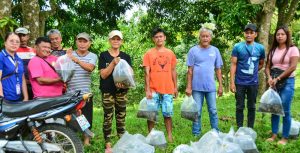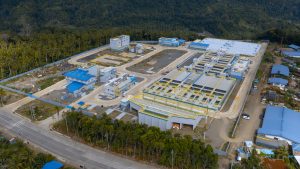A return to pre-Omicron protocols. This was the suggestion of private sector representatives and experts when they met recently to find ways on how the Philippines can start moving on from the pandemic.
The meeting was organized by Presidential Adviser for Entrepreneurship Joey Concepcion and was attended by experts from OCTA Research. “We should revert back to the three-day quarantine for the fully vaccinated, which was approved and implemented prior to Omicron,” said Concepcion. He further proposed that the country should eventually eliminate facility-based quarantine and instead impose home quarantine for fully vaccinated individuals. “The unvaccinated will still have to go through the usual quarantine and testing protocols,” he said.
Specifically, the view is that the Philippines should ease quarantine stays for arriving overseas passengers to three days. Moreover, vaccinations should be further incentivized with more mobility and exemption from mandatory testing for on-site workers.
“The Philippines’s economic health is now a serious issue,” said Concepcion. “Whatever we decide now will impact the country’s economy for years to come.”
Fr. Nicanor Austriaco said that these protocols were already in place and approved by the government and were only put on hold because of the Omicron surge. The molecular biologist believes that the National Capital Region (NCR) and the rest of the country will have passed the Omicron wave by the end of February, paving the way for the government to re-examine its travel protocols.
In particular, he thinks the Philippines should follow Thailand’s “test-and-go” system where arriving passengers only need to spend one night in a hotel while they await their COVID-19 results.
Furthermore, Concepcion believes that arriving passengers who have had COVID within 60 days should be exempted from quarantine and should instead present an RT-PCR test showing this. “We all know remnants of the virus can still linger on creating false positives,” he said.
OCTA’s Dr. Michael Tee, meanwhile, explained that quarantines are meant to catch the entry of variants of concern, which have already managed to enter the country anyway. “We don’t see any variants of concern at the moment,” he said.
Dr. Tee further believes that the money spent on facility quarantines would be better spent on surveilling positive cases as the information gathered from such an activity would be useful in crafting policy. He also believes that the economic value produced by MSMEs and airlines is far greater than that produced by hotel quarantining and testing.
It was also proposed that quarantines be offloaded from the national government to the provincial governments as this would further ease bottlenecks. PAL reports that 30 to 40 percent of returning Filipinos who arrive in the NCR eventually connect to the provinces.
Dr. Tee said any move to further ease quarantines should be backed by data. He further said that there might be no need anymore to distinguish between vaccinated and unvaccinated travelers as long as there is credible testing in place.
On the vaccination front, OCTA’s latest Tugon ng Masa survey conducted last December 2021 showed a dramatic drop in vaccine hesitancy among Filipinos, from 22 percent in September 2021 to the current 5 percent. It further found that almost seven out of 10 Filipinos approve of mandatory vaccinations. “And this was even before Omicron hit,” observed OCTA Research’s Dr. Ranjit Rye.
“We are doing everything possible to convince the unvaccinated, but in the end, it will be their choice and they will have to bear the consequences that come with staying unvaccinated,” said Concepcion.
The move to ease into a post-pandemic life has been seen in a growing chorus around the world, and the debate is now unfolding in many countries.



